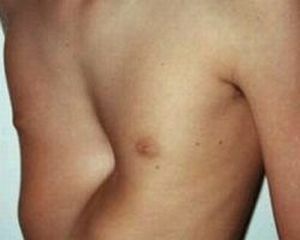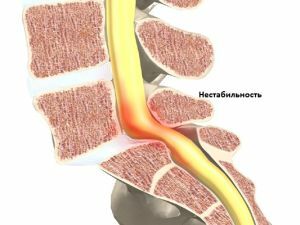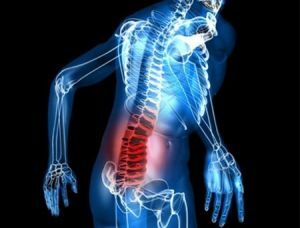 Due to various disorders in the human bone tissue, atrophic processes may begin, differing in the nature of the course of the pathology and its consequences.
Due to various disorders in the human bone tissue, atrophic processes may begin, differing in the nature of the course of the pathology and its consequences.
One of them is osteoporosis, which is characterized by a lack of calcium in the bones, and to the second - osteomalacia, accompanied by softening of the bone mass.
It's the last disease that will be discussed next. His insidiousness lies in the fact that in most cases it is "dumb" and is revealed already in the last stages.
Contents of the article
- How the disease begins
- Types of violation
- Causes of the disease
- How does the disorder manifest itself?
- Pueralnaya form
- Ricket form
- Menopause
- Osteomalacia
- Diagnosis of the disease
- Therapeutic therapy
How the disease begins
The human skeleton is subject to enormous loads. Thanks to his support and protection, all internal organs and soft tissues are shielded from external force.
However, the failure of some functions in the body causes a violation of the mineralization process involving phosphorus and calcium compounds.
Inability to digest the bone mass of these elements leads to softening of the bones. Increased elasticity and low strength increase the risk of severe bruises, cracks and fractures.
So what happens in the human body and why osteomalacia is considered quite a serious pathology?
The fact is that in a healthy person the bone mass undergoes several processes: the formation of a new bone( osteoid), mineralization and destruction.
Typically, these processes are balanced and occur in such a way that the restructuring does not affect the strength.
However, due to the disruption of the mineralization process with the participation of phosphorus and calcium compounds, the formation of a non-mineralized osteoid is excessive, which causes excessive flexibility and brittleness of the bone.

Types of infringement of
Previously, the disease was considered rare enough, but due to lifestyle changes and eating disorders, it is difficult to attribute it to. Remarkable is the fact that in women, the violation of mineralization occurs 10 times more often than in the opposite sex.
A similar phenomenon is associated with a change in the hormonal background.
Four clinical forms of pathology were identified:
- The pueral form occurs in women aged 20 to 40 years. Especially often such osteomalacia is manifested in pregnant women.
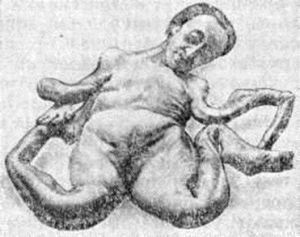 Symptoms may also occur after delivery and during breastfeeding.
Symptoms may also occur after delivery and during breastfeeding. - Rickety .A similar form may appear in the adolescent during puberty, and is associated with a lack of nutrients. In children, this disease is called late rickets.
- Menopause .The menopause period in women is characterized by a lack of estrogens, which are involved in the process of osteogenesis.
- Starter .This form is a consequence of multiple disorders in metabolic metabolism, which leads to defects in calcium metabolism.
Causes of the disease
The main cause of the violation of mineralization is the low content of calcium and phosphate in the blood. A calcium and phosphate metabolism in turn depend on the following factors:
- digestibility of calcium by intestinal walls;
- low-speed calcium deposition in the bone against the background of its rapid excretion from the body;
- of kidney work in the excretion of calcium;
- the amount of vitamin D in the body.
How does the violation appear?
As it was said above, at the initial stage of osteomalacia no bright symptoms are observed.
But with careful self-observation the patient may feel an unclear origin of discomfort throughout the body.
Also there are periodic light pains in the zone of the waist, hips and legs, which are often written off for other ailments or banal fatigue. Less often they are observed in the hands and shoulders.
For later stages, each form of pathology has its own distinctive features.
Poirotal form
Symptoms of the paroural osteomalacia: 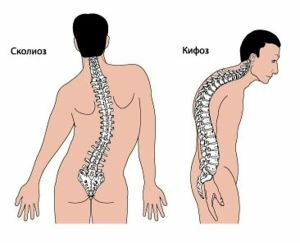
- softening of the spinal column, starting with a disruption in the integrity of individual vertebrae;
- curvature of the spine with its gradual displacement in the lateral plane and the formation of lordosis and kyphosis;
- complaints of severe pain in the sacral region, as well as in the pelvis and legs;
- there is a duck walk.
Rickety form of
Characteristic features:
- curvature of legs;
- funnel-shaped curvature of the thoracic cavity.
Menopause
Characteristic for this form:
- kyphosis;
- shortening of the lumbar region;
- with further progression of the disease decreases body length;
- skewing of the skeleton, which leads to a complete loss of self-movement;
- frequent fractures.
Osteomalacia
Symptoms:
- frequent fractures;
- duck or shining walking;
- climbing the stairs causes painful discomfort;
- palpation of the bones most often causes pain.
Diagnosis of the disease
It does not cause difficulties in diagnosing children. Ricket form has clear signs and therefore the disease is difficult to confuse with any other pathology.
However, the definition of osteomalacia in adults is not so simple, and at an early stage it is very important to distinguish between two seemingly similar diseases: osteomalacia and osteoporosis.
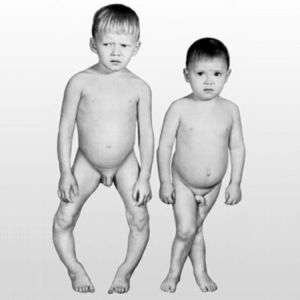 If biopsy is not possible, the gamma-photon absorptiometry method is used. Such a diagnostic examination determines the amount of minerals in a particular area of the bone. Also for the diagnosis can be used X-ray.
If biopsy is not possible, the gamma-photon absorptiometry method is used. Such a diagnostic examination determines the amount of minerals in a particular area of the bone. Also for the diagnosis can be used X-ray.
If there is a destructive process, the images will clearly show extended bone marrow cavities in the tubular bone and low bone density.
As for laboratory studies, the following tests help to establish pathology:
- quantitative indicator of phosphorus and calcium in serum;
- excess of liver enzymes.
- level of alkaline phosphatase.
Therapeutic therapy
In order to reduce the destruction of bone tissue, to normalize the mineral metabolism and eliminate the deformity that has already arisen, first of all it will be necessary to eliminate the deficiency of vitamin D, as well as elements of phosphorus and calcium.
It is these criteria that determine therapeutic therapy.
The patient is prescribed the following drugs:
- Vitamin D is intramuscular or oral. Dosage is prescribed individually and depends on diagnostic tests.
- Infusion administration of calcium preparations in violation of its absorption in the gastrointestinal tract.
- Vitamin B and C are prescribed to enhance vitamin D digestion.
- Phosphate compounds.
Nutrition and lifestyle changes are of particular importance in the treatment of osteomalacia syndrome.
Patients are recommended to include in the diet:
- dairy products;
- seafood and fatty fish;
- beef liver;
- soft-boiled eggs;
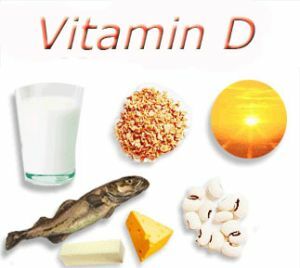
- parsley;
- coriander;
- pumpkin;
- cabbage of different varieties;
- zucchini;
- mushrooms.
It is also necessary to increase the patient's stay in the sun, but avoid periods of maximum solar activity during the day.
I would like to note that the treatment of this disease takes place throughout the life of the patient. Therefore, the use of drugs is carried out constantly, but under the supervision of the attending physician.
As the condition improves, new diagnostic studies are conducted, which show how much vitamin B can be reduced.

